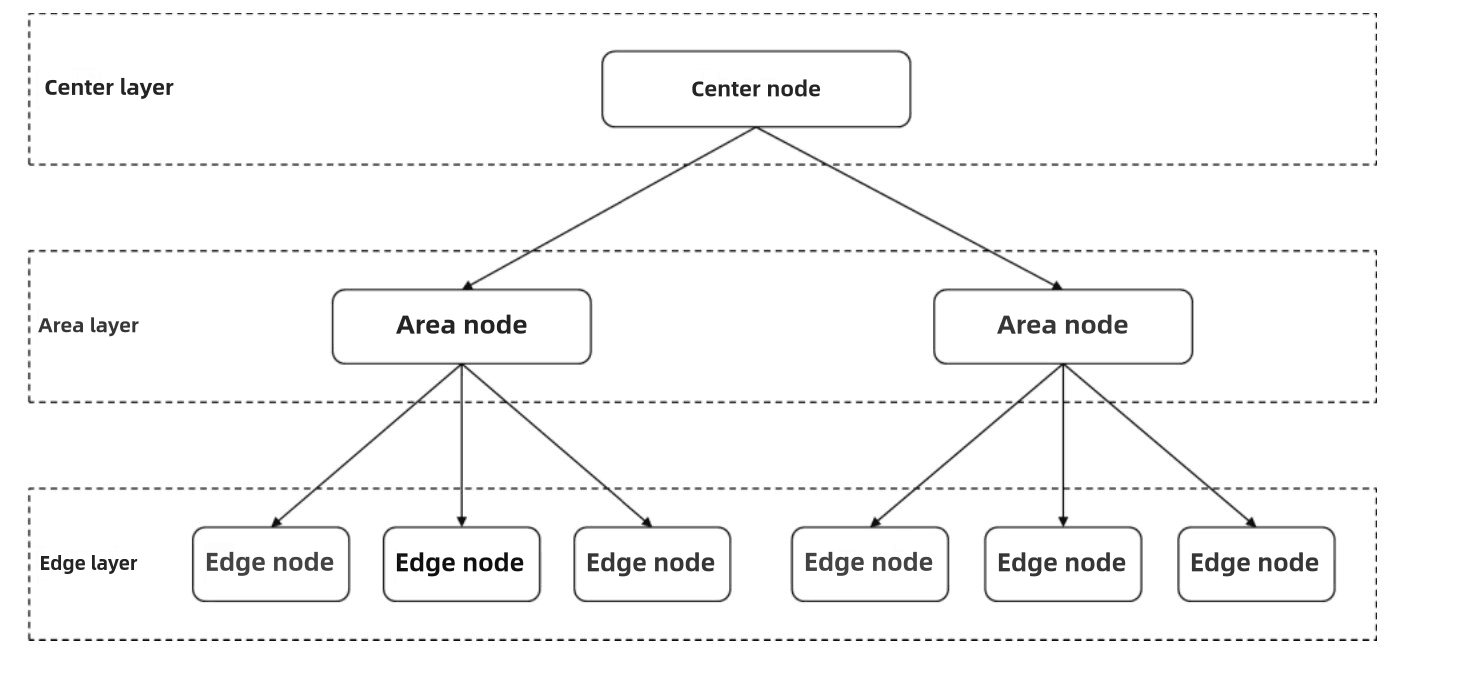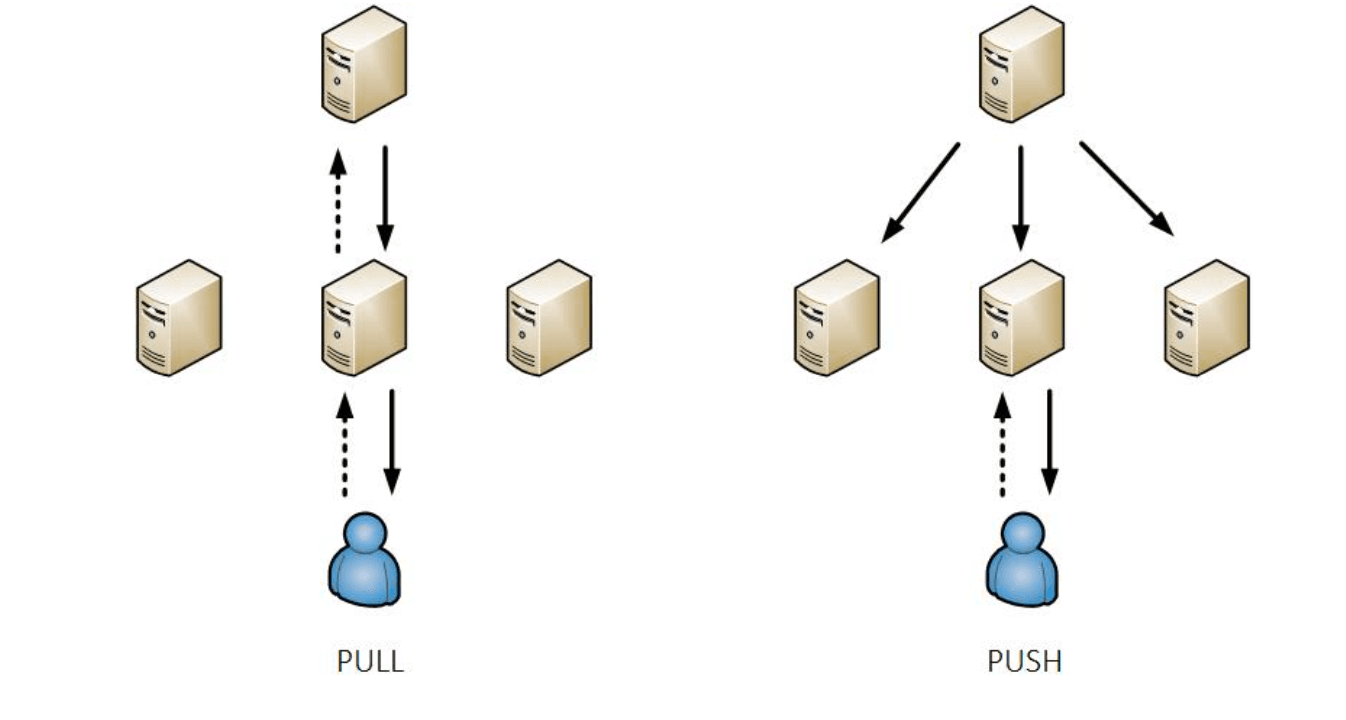Content Delivery Networks (CDNs) have become an integral part of the modern internet infrastructure, playing a crucial role in enhancing website performance, reducing latency, and improving user experience. This blog post will delve into the intricacies of CDN architecture, its working process, and the underlying technologies that make it all possible.
CDN Architecture
A typical CDN architecture consists of multiple layers of servers strategically distributed across various geographical locations. The hierarchy usually includes:

- Edge Nodes (L1): Also known as Point-of-Presence (POP) nodes, these servers directly interact with end-users.
- Regional Nodes (L2): These serve as content distribution points and handle cache misses from edge nodes.
- Central Nodes (L3): The core of the CDN, these nodes typically interact with the origin server and distribute content to regional nodes.
The L2 and L3 nodes are often referred to as backbone nodes, playing a crucial role in content distribution and serving requests when edge nodes experience cache misses.
How CDN Works: A Step-by-Step Process
Let's walk through the typical workflow of a CDN:
User Request: A user attempts to access content via a URL, first checking their local hosts file and DNS cache.
DNS Resolution: If no local resolution is found, the request goes to the Local DNS server.
CDN DNS Server: Due to CDN configuration, the local DNS server forwards the resolution to the CDN's DNS server.
Load Balancer IP: The CDN DNS server returns the IP address of its load balancing server to the user.
Request to CDN: The user sends a request for the URL to the CDN's load balancing server.
Optimal Edge Node Selection: The CDN's load balancer selects the most appropriate edge node based on factors such as:
- Geographical proximity to the user
- Availability of requested content on the node
- Current load on different servers
Content Delivery: The selected edge node responds to the user's request, delivering the required content.
Content Retrieval: The "Origin Pull" Process
When a CDN node doesn't have the requested content in its cache, it needs to retrieve it from the origin server. This process is known as "origin pull" or "cache miss." To reduce the load on the origin server:
- Edge nodes typically request content from regional nodes.
- Regional nodes may fetch content from central nodes or directly from the origin server.
- Central nodes are usually responsible for communicating with the origin server.
This hierarchical approach helps in efficient content distribution and reduces the load on the origin server.
Core Technologies Behind CDN
CDNs primarily rely on two fundamental technologies: caching and proxying.
Caching in CDN
Caching is crucial for storing and quickly retrieving frequently accessed content. For web content, CDNs heavily rely on HTTP protocol's caching mechanisms:
- Expires Header: Controls cache expiration time.
- HTTP Caching Mechanism: Utilizes features like 304 Not Modified responses.
- Cache-Control Header: Provides directives like max-age and no-cache.
- Pragma Header: Used in HTTP/1.0 for cache control.
- HTML META Tags: Can be used in conjunction with HTTP headers for cache control.
Caching Principles for Static Web Content
CDNs typically follow these principles for caching static content:
- Respect cache control directives (e.g., Cache-Control: no-cache).
- Avoid caching content requiring authentication or encryption.
- Require ETag or Last-Modified headers for cacheability.
- Serve cached content within its TTL (Time to Live) without revalidation.
- Revalidate expired content with the origin server before serving.
Handling Dynamic Content
For dynamic content like streaming media, CDNs often use a push-based approach. Instead of the CDN pulling content from the origin, the origin server actively pushes content to CDN nodes. This method is more suitable for real-time or near-real-time content delivery.

This diagram illustrates the difference between PULL and PUSH methods in content delivery. For static content, CDNs typically use the PULL method, where the CDN retrieves content from the origin server when needed. For dynamic content like live streaming, the PUSH method is often employed, with the origin server actively sending updates to CDN nodes.
Proxying in CDN
CDNs primarily use reverse proxying, where the proxy server acts on behalf of the origin server. This approach allows CDNs to handle client requests without exposing the actual location or details of the origin server.
In a reverse proxy setup:
- Clients are unaware of the actual origin server.
- All requests are processed through CDN edge nodes.
- The CDN acts as an intermediary, improving security and performance.
Popular reverse proxy servers used in CDNs include Apache and Nginx, with Nginx being particularly favored for its high performance and stability.
CDN and DNS Interaction
The relationship between CDN and DNS is crucial for efficient content delivery. Here's how they work together:
CNAME Records: CDNs often use CNAME (Canonical Name) records to redirect domain queries to their own DNS servers.
Anycast DNS: CDN DNS servers typically use anycast routing, allowing a single IP address to represent multiple physical servers globally.
Geolocation: When resolving a domain, the CDN's DNS server considers the user's approximate location based on their DNS resolver's IP address.
Dynamic Resolution: CDNs can update DNS responses in real-time based on server health, network conditions, and content availability.
This DNS-based request routing allows CDNs to direct users to the most appropriate content server, optimizing delivery speed and reliability.
Advanced CDN Features
Load Balancing
CDNs employ sophisticated load balancing techniques to distribute traffic across multiple servers. This ensures optimal resource utilization and prevents any single server from becoming overwhelmed. Load balancing strategies may include:
- Round-robin distribution
- Least connection method
- IP hash
- Geographic-based routing
Security Features
Modern CDNs offer various security features to protect websites from attacks:
- DDoS Protection: CDNs can absorb and mitigate Distributed Denial of Service attacks.
- Web Application Firewall (WAF): Filters out malicious traffic before it reaches the origin server.
- SSL/TLS Encryption: Secures data in transit between the user and the CDN.
Analytics and Reporting
CDNs provide detailed analytics on content delivery, user behavior, and network performance. This data can be invaluable for:
- Optimizing content delivery strategies
- Identifying and resolving performance issues
- Understanding user engagement and geographical distribution
Challenges and Considerations in CDN Implementation
While CDNs offer numerous benefits, there are several challenges to consider:
Content Freshness: Ensuring that cached content is up-to-date and consistent across all nodes can be challenging, especially for frequently updated content.
Cache Hit Ratio: Optimizing the cache hit ratio is crucial for CDN performance. This involves careful consideration of caching policies and content popularity.
Geographical Coverage: Ensuring adequate coverage in all relevant geographical areas while managing costs can be a balancing act.
Protocol Support: As new web protocols emerge (e.g., HTTP/3), CDNs need to continuously update their infrastructure to support these advancements.
Cost Management: While CDNs can reduce origin server load, the costs associated with CDN services need to be carefully managed, especially for high-traffic websites.
Future Trends in CDN Technology
As the internet landscape evolves, CDNs are adapting to new challenges and opportunities:
Edge Computing: CDNs are expanding beyond content delivery to offer edge computing capabilities, allowing for processing closer to the end-user.
AI and Machine Learning Integration: These technologies are being used to predict content popularity, optimize caching strategies, and detect security threats.
5G Integration: As 5G networks roll out, CDNs are adapting to leverage the increased bandwidth and reduced latency for even faster content delivery.
IoT Support: CDNs are evolving to support the unique needs of Internet of Things (IoT) devices, including efficient delivery of firmware updates and handling of sensor data.
Enhanced Video Delivery: With the growing demand for high-quality video streaming, CDNs are developing more sophisticated video delivery technologies, including adaptive bitrate streaming and low-latency live streaming solutions.
Conclusion
Content Delivery Networks have revolutionized the way we access and consume content on the internet. By leveraging a distributed network of servers, intelligent caching mechanisms, and efficient proxying techniques, CDNs significantly reduce latency, improve website performance, and enhance user experience.
As the internet continues to grow and evolve, CDNs will play an increasingly important role in managing the ever-expanding volume of content and traffic. Understanding the architecture and working principles of CDNs is crucial for developers, system administrators, and anyone involved in delivering content over the internet.
The synergy between CDNs and fundamental internet technologies like DNS showcases how different layers of web infrastructure can work together to create a faster, more reliable, and more scalable internet for users worldwide. As we move forward, we can expect to see further innovations in CDN technology, potentially incorporating edge computing, AI-driven optimizations, and even more sophisticated content delivery mechanisms.
In an era where user experience and performance are paramount, CDNs will continue to be a cornerstone of efficient and effective content delivery, shaping the future of how we interact with and consume digital content.